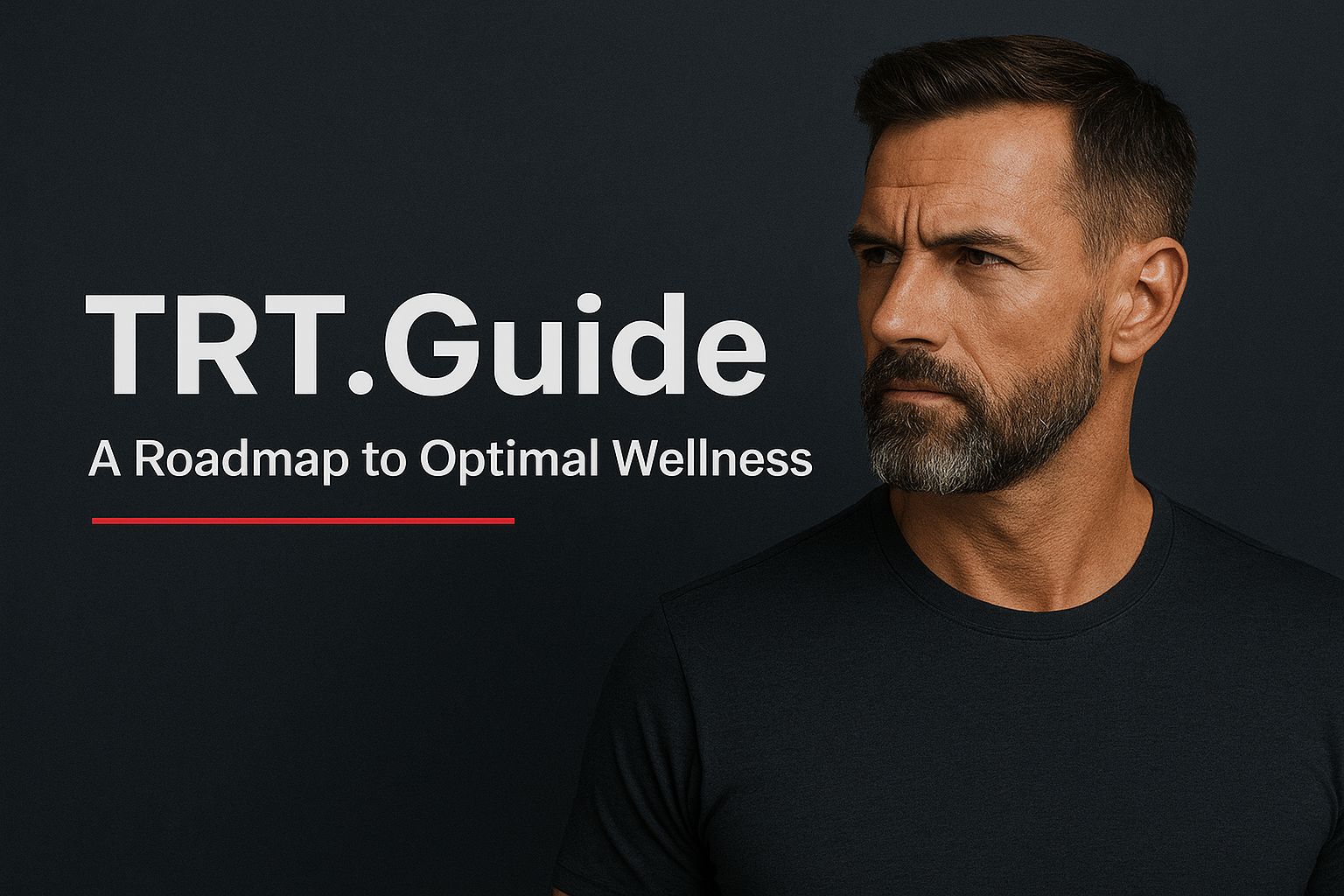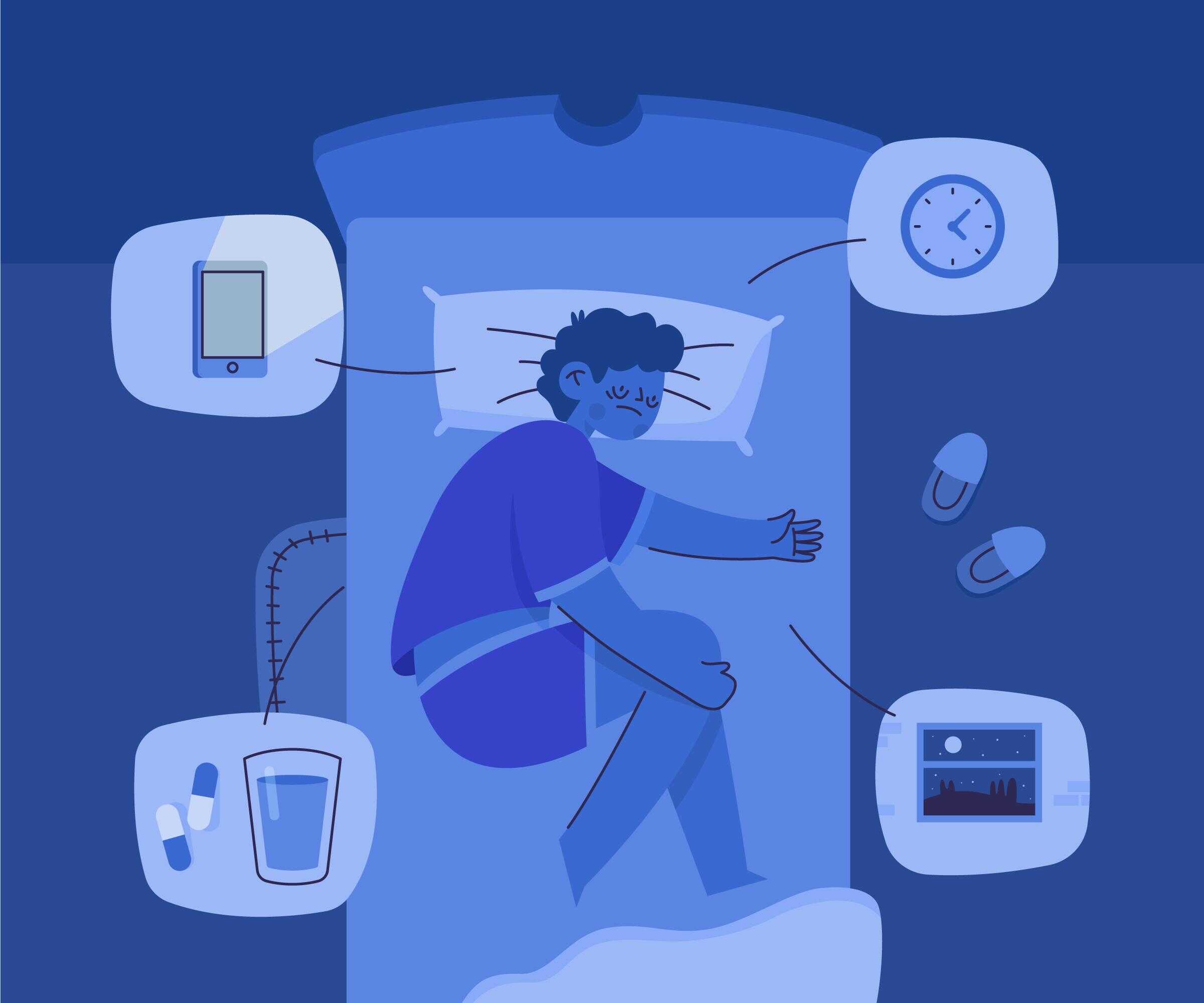Sleep apnea involves more than snoring, in actual fact, it’s a severe disorder that causes breathing to pause during sleep and can be a cause of numerous health problems. For example, if you have been struggling with various health issues, such as fatigue, mood swings, or low energy, the fact that the root issue of your problems might be sleep apnea could have been hidden from you all the time.
Testosterone replacement therapy (TRT) has found a lot of interest as a treatment with good potential for increasing energy and improving the general state of human health. Nonetheless, TRT – sleep apnea correlation can be complex but is definitely worth a shot. Having a clear image in your mind of the ways these factors collide can be very beneficial when you need to make decisions for yourself on your health and well-being. In our article, you can learn more about what changes sleep apnea and testosterone replacement therapy bring, and the effects they have on you and your health will be much more transparent
Learning About Sleep Apnea
Sleep apnea is a condition characterized by gaps in normal breathing while you sleep. Typically, most of the time, it causes you to wake up multiple times and the oxygen in the blood to see a decrease that can be followed by episodes of mood changes and fatigue. Being aware of sleep apnea will help you in realizing how it is linked to both general health and testosterone levels.
What Is Sleep Apnea?
The condition is known as sleep apnea if it happens that a person stops breathing several times while they sleep. The break may last from a few seconds to several minutes. These episodes can occur at least dozens of times a night. The most common sleep apnea problem is obstructive sleep apnea (OSA) which happens when throat muscles get extremely relaxed during sleep thereby blocking the airway. As for central sleep apnea (CSA), it isn’t common and may occur when the brain doesn’t send signals to the breathing muscles. Additionally, complex sleep apnea syndrome is a blend of both OSA and CSA. Determining the type of sleep apnea would be an important point to make sure that the treatment of the condition is successful.
Causes of Sleep Apnea
Sleep apnea is caused by various reasons. Obesity is arguably the strongest link to the condition because fat deposited around the neck from being overweight will cause the airways to be narrowed. Moreover, the mouth and throat could be the origin of the problem, that is, people who have a wide neck, swollen tonsils, or a narrow jaw will be more sensitive to the disorder. Another risk factor is the increase in age; as people get old, their muscle tone decreases, which increases the chance of the disorder getting to them. The consumption of alcohol and smoking can be more serious contributors to throat relaxation as they make breathing difficult. Besides, diseases like heart disease and diabetes can increase the risk of sleep apnea. If you understand the reasons for this influence, you can change your lifestyle and resist diseases.
Symptoms of Sleep Apnea
The symptoms that occur in sleep apnea are most often characterized by loud snoring which disrupts the others and the person’s daytime fatigue caused by the lack of complete sleep due to frequent waking. Additionally, you may awaken frequently during the night, gasping for breath or choking, while morning headaches and daytime concentration difficulties are other equally important signs. It is of note that irritability and mood changes are also likely to come from the poor quality of sleep you have been having. It is imperative that you are familiar with the above symptoms because early recognition will be instrumental in the cure and treatment of sleep apnea which also translates to better health and happiness.
Testosterone Replacement Therapy Overview
Testosterone replacement therapy is a medical intervention designed to restore the bodily testosterone level that has dropped below some optimal standard especially in males. It works by stimulating the body’s natural production of the hormone and thus getting the body back to a balanced state of normal functioning which in addition improves a patient’s health and post-treatment well-being.
Humanized Rewrite:
What Is Testosterone Replacement Therapy?
Testosterone replacement therapy is the process of replenishing the level of testosterone up to a normal range by the use of different methods. The available methods include such as injections, patches, gels, and pellets. Each one of the methods is used to deliver testosterone into the system but their frequency of this treatment varies.
Injections most likely are carried out every two to four weeks. Patches and gels release a constant flow of testosterone and are administered daily. Pellets are inserted under the skin and the hormone is slowly released for a period of a couple of months. The determination of the method is based on individual preferences and medical advice.
Regardless of the method chosen for TRT, patients should first a health professional run some testosterone tests to check the levels in their blood. The lower number can be evaluated in several ways such as fatigue, decreased libido, mood swings, and lack of the ability to concentrate. Once the results of the test have come in and low levels of testosterone have been confirmed, TRT becomes recommended as the only way out.
Benefits of Testosterone Replacement Therapy
Many are the advantages of testosterone replacement therapy. A lot of men have reported that they felt more energized and happier with their mood. An increase in the desire for sexual activities has been the case for most men and this can definitely establish a more desirable sex life. It is also important to mention that TRT can lead to an increase in muscle mass and strength and thus, have positive effects on the general health and fitness levels of the body.<\p>
Memory output and intelligence are areas where several men have felt the most improvement. Actually, the combination of the normalized testosterone level with the betterment in cognitive function is paramount for affecting daily responsibilities and professional tasks. In addition, TRT can be a great contributor to the loss of the fat in our body and our body will get a good body shape.
Regular testing for testosterone levels is an absolute must if one is on the journey of a testosterone replacement therapy. This action allows deciding about the course of treatment to fit a patient best and the prevention of any complications.
Risks and Side Effects of Testosterone Replacement Therapy
Although very beneficial in some aspects, testosterone replacement therapy is not risk-free. The therapy comes with some probable side effects, among which are increased red blood cell count, acne, and the retention of fluids. These side effects could be a reason for a therapy revision or a call for a healthcare professional to administer more control and care.
TRT is liable to worsen existing health problems like sleep apnea or prostate issues. Talk to a healthcare provider immediately if you have had prostate cancer or any other severe health issues. But make sure you still do it in case you have further health concerns.
Change of mood and aggressiveness can happen to some of the TRT treatment users. Keep track of any side effects and improvements in hormone levels and general health by adhering to regular check-up appointments. Thus, proper management will be realized, and this will contribute to a quick recovery of the patients.
Relationship Between Sleep Apnea and Testosterone Levels
Men with sleep apnea are more likely to have less testosterone. Therefore, understanding how sleep apnea is influencing this hormone’s production is extremely crucial.
How Sleep Apnea Affects Testosterone Levels
Sleep apnea disrupts sleep patterns thus making it difficult to produce testosterone which usually occurs in deep sleep. Since sleep apnea interrupts deep sleep with its breathing difficulties testosterone levels drop. Studies show that untreated sleep apnea men have lower testosterone levels than others.
There is a strong link between obstructive sleep apnea and testosterone deficiency. OSA repeatedly arouses from sleep which robs restorative deep sleep. Therefore, OSA limits testosterone’s normal daily rise.
Research shows that men suffering from moderate to severe sleep apnea usually have declining testosterone levels which contributes to fatigue as well as low libido. Treating sleep apnea increases oxygenation; hence improve hormone balance thus restoring testosterone levels thereby enhancing health.
Potential Impact of Testosterone Replacement Therapy on Sleep Apnea
Testosterone replacement therapy has a mixed effect on sleep apnea. By raising testosterone levels TRT may relieve effects related to low testosterone such as fatigue. However there is not conclusive evidence regarding how TRT influences sleep apnea.
Testosterone therapy (TRT) can help some people with sleep apnea, but it can also make it worse. TRT can make airways stronger and can help you sleep better. But elevated testosterone also might make you gain weight, which can cause sleep apnea that there’s a problem.
The only way to know if TRT is right for you, is to talk to a doctor. They’ll keep an eye on you and tweak your therapy as necessary.
Causing sleep apnea can be harmful. It’s wise to look into your problems and find a way to fix them. The practice is better for your health and sleep.
Seeing a Doctor for Sleep Apnea
Sleep apnea must be taken seriously. The symptoms are common. Getting treatment means better sleep and life overall.
Talking About It with Your Doctor
If you’re not sleeping well, tell your doctor. They will ask about snoring, being tired during the day, or feeling moody. They may suggest you see a specialist who studies sleep disorders.
The doctor will check your body to see if there’s a block. They will measure your weight and tell you about the effects of alcohol and cigarettes on sleep.
Talk about tests and treatment options. Untreated sleep apnea can lower testosterone and harm health. Know the risks and benefits of treatments for better choices.
Tests to Diagnose Sleep Apnea
To diagnose sleep apnea accurately, you need tests. The common one is polysomnography (PSG) in a sleep lab. While sleeping, machines check brain, eyes, heart, breathing patterns.
Home sleep apnea test (HSAT) is another option. At home, wear a device that tracks breath, heart, and oxygen. HSAT suits moderate risk folks.
Your healthcare provider chooses the best test based on your symptoms and history. Results lead to diagnosis and tailored treatment options.
Treatment Choices for Sleep Apnea
If you have sleep apnea, look at different treatments. CPAP therapy is the most popular. A machine gives air pressure through a mask at night. The right fit keeps you using it as needed.
Some doctors suggest mouthpieces to keep the airway open. A dentist can help these be fitted accurately when needed.
If sleep apnea is due to being overweight, losing weight and eating well can help. Exercise and good food lessen the symptoms.
Sometimes surgery is needed if there is an anatomical problem causing blockage. Talk to a doctor about options such as UPPP or jaw surgery.
Follow up visits are important to monitor treatment for sleep apnea and testosterone levels.
Process of Testosterone Replacement Therapy
Testosterone replacement therapy has several steps to keep them safe and effective; first is medical evaluation, then selecting the type of therapy, followed by monitoring results.
Initial Consultation and Tests
Start by seeing a doctor who will discuss symptoms associated with low testosterone. There will be checks including a physical and blood tests.
Blood tests measure total testosterone in morning when it is usually highest. Low total testosterone may lead to more tests for free levels and other hormones affecting production.
Talk about medical history. You need to mention current medications, pre-existing conditions, and lifestyle habits. The doctor might ask about prostate issues and sleep apnea in you or your family. This matters for TRT.
Evaluate the results of tests. The treatment plan should suit your needs. This includes fixing testosterone levels and looking at other health issues for success.
Types of Testosterone Replacement Therapy
There are several ways to get testosterone. They all have pros and cons, so you can choose what works for you.
- Injections: These shots work quickly. You get them every week or two. Examples are testosterone enanthate and cypionate.
- Patches: They stick to your skin and release hormones all day. You use new ones each day.
- Gels: Apply daily on clean skin. Gels come in tubes or packets.
- Pellets: Tiny pellets go under your skin and last 3 to 6 months. This needs a small operation.
Each method has benefits based on your life. Talk with your doctor to find what suits you best during TRT.
Monitoring Therapy Effectiveness
After starting TRT, you need regular checkups. This ensures it is safe and working right for you.
Get blood tests every 3 to 6 months during therapy to check testosterone levels and red blood cells; discuss any side effects with the doctor.
Eat well and exercise; they’ll keep your hormones in check too. Work with the doctor for the best therapy plan.
For sleep apnea, lose weight. Do 150 minutes of exercise per week; eat fruits, veggies, grains.
- Do not drink alcohol and take sedatives. These things make sleep apnea worse by making the throat muscles relax.
- Set a consistent bedtime and wake-up time. Daily routines help sleep better.
- Keep your bedroom cool, dark and quiet. Use blackout curtains and white noise machines.
- If you smoke, quit. Smoking irritates the airway and worsens sleep apnea.
- Sleep on your side instead of your back. This keeps the airway open.
Making these changes will help you sleep better and feel healthier while on TRT.
Using CPAP Therapy
CPAP couples air flow to air mask. This keeps the airway from closing during sleep. It raises oxygen levels in many people, allowing better sleep.
- Know that P>CPAP gives constant air pressure through the mask to the airway open during sleep. It restores oxygen level and hence enhance sleep.
- Talk with your doctor about the right mask and airflow settings. Some masks fit different for comfort and efficiency.
- Use CPAP every night to sleep better, have more energy, and make more testosterone.
- Clean your CPAP regularly to stop germs or issues in it. Stick to the cleaning rules.
- Update your doctor on your CPAP use and how it’s helping with sleep. They may change the settings based on info you give them.
Using CPAP may give better sleep and testosterone benefits during TRT.
Regularly Meet with Your Doctor
Having check-ups is crucial for managing sleep apnea and testosterone.
- Schedule regular appointments to talk about sleep, problems, and how well treatments are working.
- Monitor testosterone levels using blood tests. Adjust dosage if there are issues together with apnea.
- Tell doctors if new or worse signs come up as changes could be necessary in treatments.
- If symptoms keep occurring, ask to see a sleep doctor.
- Speak with your healthcare provider for newer options for treatment.
Keep in touch with the doctors managing your sleep apnea and testosterone levels so they can follow up on how you are responding to treatment.
Problems in Therapy
The treatment of sleep apnea and testosterone replacement can be trying. It is possible to deal with some issues so that you may remain healthy.
Addressing Side Effects of the Therapy
Check your hormone levels often by having blood tests to see whether the replacement therapy is working and to spot any side effects early like acne or mood swings.
Talk to your doctor about possible side effects you may have suffered from so that adjustments to either the dosage or method of therapy can be made on time.
Engage in physical activity and eat a balanced diet in order to improve on health while on therapy. In addition, more exercise will lead to reduced body fat hence more testosterone levels will also follow.
Drink enough water which will help relieve some effects like headaches and tiredness. Drink at least eight 8oz glasses of water every day.
Ask about different ways of receiving the replacement therapy such as injections, gels or patches each with its own benefits and disadvantages.
Addressing Worsening Sleep Apnea Symptoms
Stick to CPAP. Use it daily. Follow the settings and keep it clean at all times. This helps to manage sleep apnea effectively.
Watch your weight. Move often and eat well. Foods that are high in fiber and low in sugar or trans fat have a positive effect on sleep apnea.
Say no to booze and drugs. They make the throat muscles too weak. Hence worsens sleep apnea. Avoiding them should help you sleep better.
Sleep on your side. Sleeping like that keeps the airway from collapsing thus reducing apneas. This can help improve sleep, too.
Monitor how you sleep. Note down any changes. Inform your doctor about the number of awakenings, snoring level, as well as daytime tiredness so there can be tailored treatment.
When to Seek Medical Advice
If there are constant problems talk with the doctor. Fatigue, broken sleep or other issues might indicate sleep apnea. Quick diagnosis could be helpful.
Let the doctor know of any troubling side effects from TRT. Severe headaches or emotional problems may need attention. Adjusting treatment is important for safety and success.
Check if the treatment is working. Meet with your doctor regularly to see how you are doing. It is important to measure hormone levels and sleep quality every 3 to 6 months to find problems early.
If the treatment for sleep apnea is not working, ask for a referral to a sleep doctor. They can offer expert help and advanced treatments.
Learn about different treatments for sleep apnea so you can choose what is best for you. Look into surgery or other options if standard treatments don’t work.
Conclusion
Dealing with sleep apnea is important for your well-being. If you feel tired or moody, see your doctor. Know that sleep apnea can affect testosterone levels.
Testosterone therapy might boost energy and mood, but watch for its effect on sleep apnea. Keep the doctor updated to get proper care. Focus on healthy habits and treatment for better results. Actively managing sleep apnea greatly improves life quality.
Frequent Ask Questions
What is sleep apnea?
Sleep apnea is when you stop breathing for a while and wake up often. This makes you feel very tired and moody.
What are the types of sleep apnea?
There are three types. Obstructive sleep apnea happens when throat muscles relax too much. Central sleep apnea occurs due to brain signals not working properly. Complex sleep apnea is a mix of both.
How does sleep apnea affect testosterone levels?
Sleep apnea can lower testosterone levels. Poor sleep causes you to feel tired and have a low sex drive. Men with obstructive sleep apnea are mainly affected by this.
What is testosterone replacement therapy (TRT)?
TRT treats low testosterone in men. It helps improve energy, mood, and memory. It can be given as injections, gels, or patches.
What are the risks of testosterone replacement therapy?
TRT has some risks like too many red blood cells, acne, and worsening sleep apnea or prostate problems. Doctors need to check patients regularly.
How can lifestyle changes help manage sleep apnea?
Being the right weight and not smoking or drinking gets rid of symptoms. Getting up and going to bed at the same time helps sleep as well. These things work well with CPAP for a sound night’s sleep.
What are the common symptoms of sleep apnea?
Loud snoring, sleepiness during the day, waking up a lot, headaches in the morning, and feeling moody are common signs. See a doctor if you have these symptoms.
How is sleep apnea diagnosed?
Doctors will ask about symptoms and do tests like sleep studies to find out what kind and how bad the sleep apnea is.
How do I find a treatment for sleep apnea?
Doctors can help you with options like CPAP machines, mouthpieces, changing habits, and surgery in some cases.
How can I monitor my health during TRT?
See your doctor and get blood tests regularly to check testosterone levels while on testosterone replacement therapy. Talk about any side effects and changes to make therapy work better.






